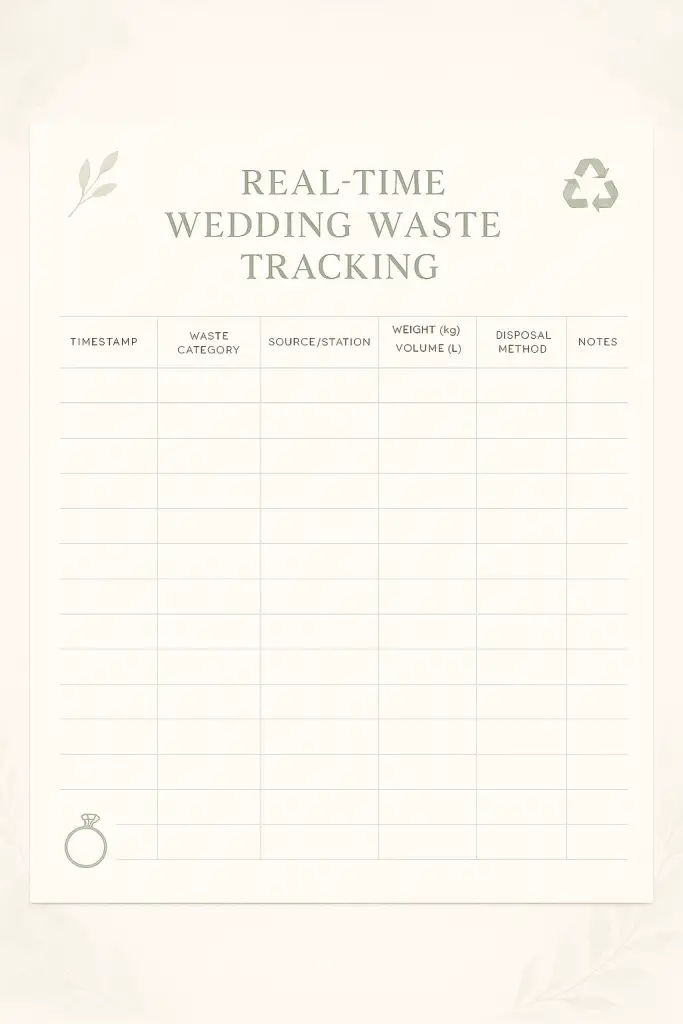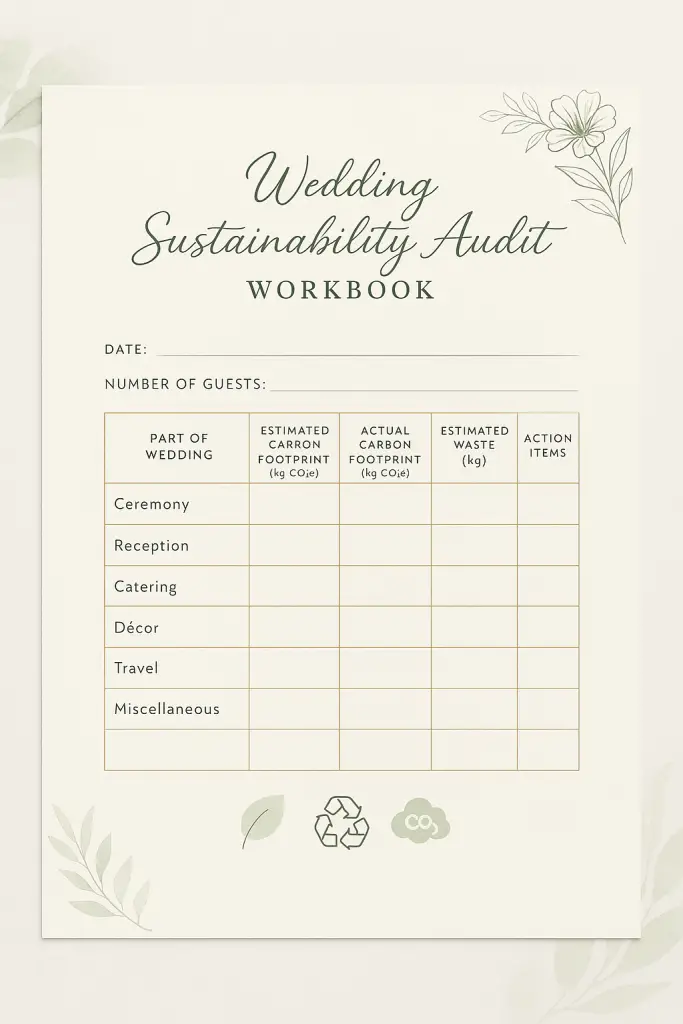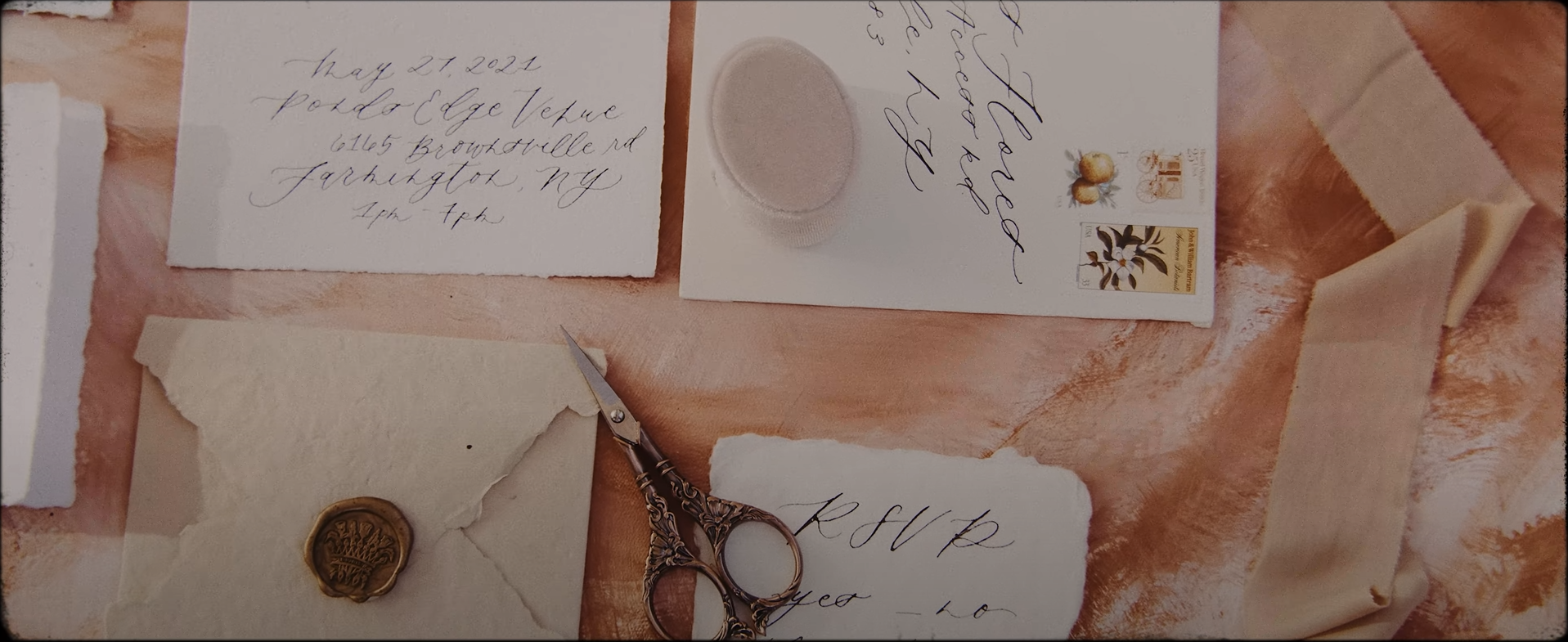Why audit wedding waste
The average U.S. wedding generates roughly 400 pounds of trash and as much as 60 metric tons of CO₂, a footprint comparable to flying four people around the world.
A formal waste audit lets you swap guesswork for data, showing exactly where those impacts come from and which choices—local menus, thrifted décor, sustainable travel plans—deliver the biggest reductions.
Even better, publishing your numbers inspires guests, vendors and future couples to follow suit, turning one celebration into a catalyst for broader change.
Set benchmarks before you spend a cent
Begin the audit the moment you start planning. Make a shared spreadsheet with separate tabs for food, drink, décor, paper goods, travel, energy and leftovers.
Record the estimated weight or volume of every item you expect to order—be that pounds of beef tenderloin or yards of muslin drape—and the disposal method you hope to use.
Tools such as the Sustainable Wedding Alliance Carbon Calculator convert menu choices, guest travel distances and rental selections into baseline CO₂ figures, giving you a snapshot of what “business as usual” would look like.
Collect real‑time data on the big day
On‑site tracking turns projections into hard evidence. Ask your caterer and bar staff to weigh back‑of‑house food scraps at the end of each service period; label separate containers for compostables, recyclables and landfill so weights stay clear.
If you prefer digital tools, the free Guardians of Grub tracking sheets are designed for hospitality teams and only take minutes to fill out.

For décor and florals, assign a friend to photograph and count everything that goes into donation boxes versus trash bags as teardown happens—small actions like this align with the mindful approach outlined in Eco-Friendly Wedding Planning for Climate-Conscious Couples.
Transportation emissions are trickier to capture live, but a simple guest survey asking ZIP codes and travel modes will let you calculate mileage later.
Crunch the numbers after the confetti
Within a week, translate your raw weights into impacts. Many municipalities publish material‑specific emission factors, but if yours does not, the Mindfully Wed Footprint Calculator will estimate CO₂ based on guest count, meal style and vendor locations.
For waste, multiply pounds of each material by its embodied‑energy factor (available through EPA’s WARM model or local waste authorities) to show how much energy was conserved by recycling versus landfilling.
Present both the absolute totals—“We generated 28 pounds of mixed recycling, 9 pounds of landfill and 0.7 tons CO₂e”—and the per‑guest averages so other couples can scale the lesson to events of any size.
Turn data into an open love letter
Publishing your audit is the step that magnifies its impact. Create a one‑page “Impact Snapshot” PDF that pairs your key numbers with photos of compost stations, thrifted centerpieces and leftover‑food donations.
Post it on your wedding website and social channels; tag vendors so the report lives in their portfolios too. If you’d like third‑party verification, platforms issue shareable dashboards once you upload your figures.
Bride Uma Raghavan decided her wedding would leave only memories, not garbage!
From seed paper invites to composted flowers, she and her family pulled off a zero-waste wedding that Chennai will never forget.🌸💚#EcoFriendlyWeddings #ZeroWasteWedding #sustainablecelebrations… pic.twitter.com/2hcaMUbqyV
— The Better India (@thebetterindia) April 28, 2025
Finally, send a brief email to guests: thank them for sorting waste correctly, link the report and invite them to try similar audits for birthdays or reunions.
Keep improving with case studies and community support
City programs like Milwaukee’s free event‑waste audits show how professional guidance can slash disposal costs for caterers and venues alike.
Industry blogs—from Busch Systems to Waste Recycling Mag—regularly publish breakdowns of sports arenas, food festivals and cultural gatherings that hit diversion rates above 90 percent.
Study what worked for them: standardized signage, backstage sorting tables, real‑time text alerts when bins filled up. Adapt the tips that fit your scale and budget; ignore the rest.
Tools and templates to make auditing painless
Downloadable wedding‑audit workbooks from resources like Earth911 or simply a custom Google Sheet can serve as your spreadsheet backbone, complete with built‑in formulas for automatic CO₂ and weight tallies.
A basic 25‑pound luggage scale—cheap, portable and accurate enough for most waste streams—handles everything from food scraps to mixed recyclables.

If you want on‑the‑spot digital logging, mobile apps such as Recycle Coach let volunteers scan items and input weights that sync to cloud dashboards.
Finally, communication kits are key: free zero‑waste signage templates on Canva can be recolored to match your palette and printed on recycled card, making it crystal‑clear to guests where compost, recycling and landfill items belong.
Key Takeaways
A waste audit may feel like extra homework when you’re already juggling RSVPs and first‑dance playlists, yet the exercise converts abstract eco‑goals into concrete wins you can celebrate alongside the vows.
By tracking materials, measuring CO₂ and sharing results publicly, you turn your wedding into a live demonstration that beautiful parties and responsible stewardship are not mutually exclusive.
Long after the last slice of cake, your footprint report will keep working—nudging friends, vendors and even total strangers toward greener “I do’s” of their own.

